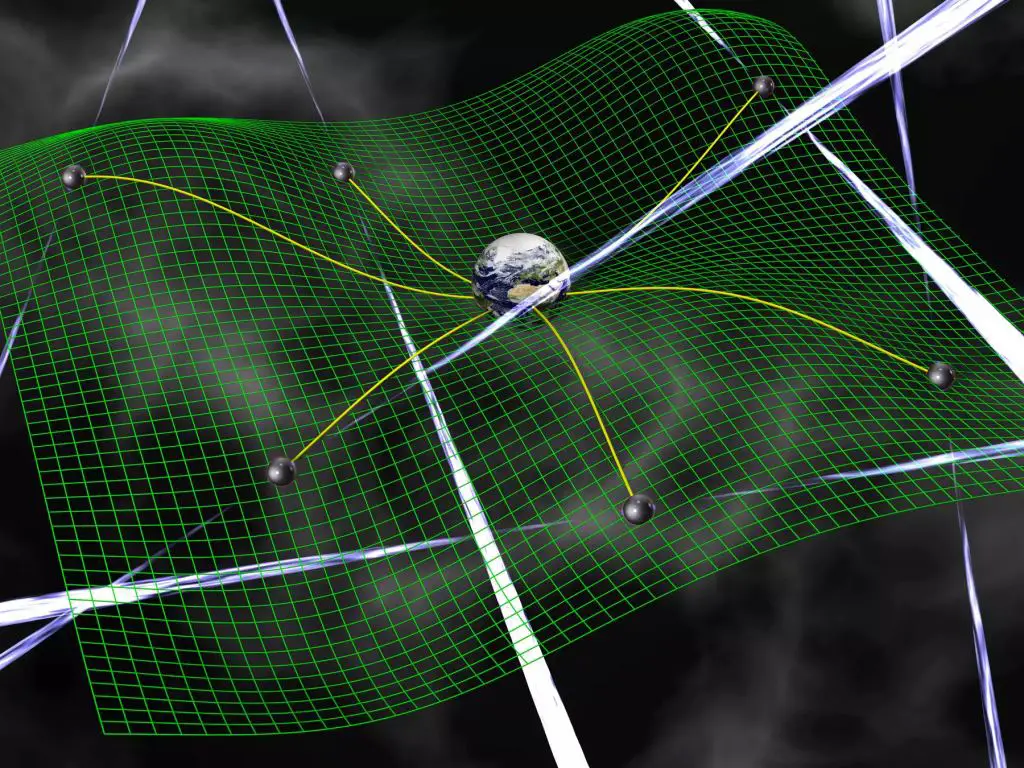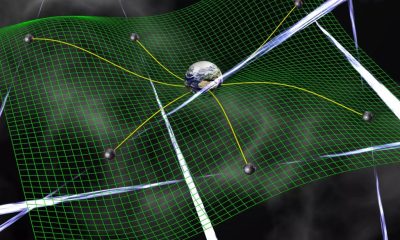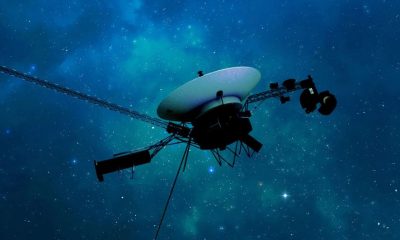News
Webb Observes a Planetary System that has Recently Completed Formation

Webb Sees a System That Just Finished Forming its Planets
Nearly 5 billion years ago, a region of gas gravitationally collapsed within a vast molecular cloud. At the center of this region, the Sun began to form, and around it formed a protoplanetary disk of gas and dust. This disk eventually led to the formation of Earth and the other planets in our solar system. While we have observed this process in systems throughout the galaxy, there are still details that remain a mystery to us, such as why gas planets are relatively rare in our system.
Our solar system consists of only four gas planets, with the rest being rocky worlds in the inner solar system. The abundance of volatile gases in early protoplanetary disks makes it puzzling as to how a gassy disk can evolve into a system predominantly made up of rock. Recent observations of a young system known as TCha have shed some light on this process.
During the later stages of planetary formation, the central star brightens, causing winds within the disk to clear the remaining gas from the system. While this model can explain the planetary systems we see, direct observations of this process have been lacking until now.

The TCha system, in its late stages of planetary formation, has a large dust gap within its disk, indicating that much of the early material has already been cleared. A recent study utilizing observations from the James Webb Space Telescope (JWST) focused on measuring spectral lines of ionized argon and neon. This study marks the first observation of a particular argon line, Ar III.
The team made two significant discoveries. Firstly, the ionizing energy levels indicate that argon is mainly ionized by extreme ultraviolet light, while neon is predominantly ionized by X-rays. Secondly, both gases are rapidly expanding away from the star, as evidenced by the Doppler shift of the spectral lines. These findings suggest that the gases are part of a stellar wind driven by high-energy photons.
Based on these observations, the team estimates that the TCha disk is losing mass rapidly, with an amount equivalent to a Moon’s mass being shed each year. This rate of mass loss aligns with observations of other planetary systems and supports the standard model of planetary evolution.
Reference: Naman S. Bajaj, et al. “JWST MIRI MRS Observations of T Cha: Discovery of a Spatially Resolved Disk Wind.” The Astronomical Journal 167 (2024): 127.
News
Further Support for Gravitational Wave Background in the Universe

The discovery of the gravitational wave background in 2016 marked a significant milestone in our understanding of the Universe. This groundbreaking discovery was further validated by the release of a second data set from the European Pulsar Timing Array, along with the addition of data from the Indian Pulsar Timing Array. These complementary studies have provided more evidence for the existence of the gravitational wave background, shedding light on the cosmic phenomena that shape our universe.
Gravitational waves are ripples in spacetime that are generated by violent processes such as merging black holes and colliding neutron stars. Predicted by Einstein in 1916 as part of his General Theory of Relativity, these waves have the ability to travel through space, largely unimpeded by any obstacles in their path. The first detection of gravitational waves in 2015 by the Laser Interferometer Gravitational-Wave Observatory (LIGO) confirmed their existence, originating from a gravitational merger between two black holes located 1.3 billion light years away.

The recent confirmation of the gravitational wave background by the European and Indian Pulsar Timing Arrays indicates that we are detecting a combined signal from the mergers of supermassive black holes. This random distribution of gravity waves that permeates the Universe offers a new avenue for studying the cosmos, akin to the Cosmic Background Radiation. The collaborative efforts of various observatories and research institutions have enabled us to delve deeper into the mysteries of the Universe.

Utilizing pulsar timing arrays as galaxy-sized detectors, researchers have been able to monitor and analyze the pulse arrival times of galactic pulsars on Earth. By detecting subtle patterns in these signals, they can uncover the presence of the gravitational wave background. The latest study led by J. Antoniadis from the Institute of Astrophysics in Greece delves into the implications of the low-frequency signals observed in the recent data releases from various pulsar timing array systems.
The accumulation of data from multiple sources has provided undeniable evidence for the existence of the gravitational wave background. With ongoing Pulsar Timing Array projects, the signals of the low-frequency gravity waves will become more distinct, offering a wealth of opportunities to explore the Universe in this novel way. The focus now shifts towards interpreting these signals to unlock the secrets of the cosmos.
-

 Entertainment1 week ago
Entertainment1 week agoOlivia Munn opens up about her decision to have a full hysterectomy during breast cancer fight: ‘It was the right choice for me’
-

 News1 week ago
News1 week agoUniversity of Wisconsin-Milwaukee and Protesters reach an agreement to dismantle encampment
-

 Entertainment2 days ago
Entertainment2 days agoSimone Biles Emerges Victorious over Suni Lee and Gabby Douglas at Gymnastics Classic
-

 News2 days ago
News2 days agoFacing Criticism for Shooting Dog, South Dakota Governor Noem Discusses ‘Difficult Choices’
-

 Business17 hours ago
Business17 hours agoWho are Crypto Market Makers and Market Takers?
-

 News18 hours ago
News18 hours agoFurther Support for Gravitational Wave Background in the Universe
-

 Entertainment18 hours ago
Entertainment18 hours agoCourteney Cox Reveals Late ‘Friends’ Co-Star Matthew Perry Continues to ‘Visit’ Her Even After His Passing










